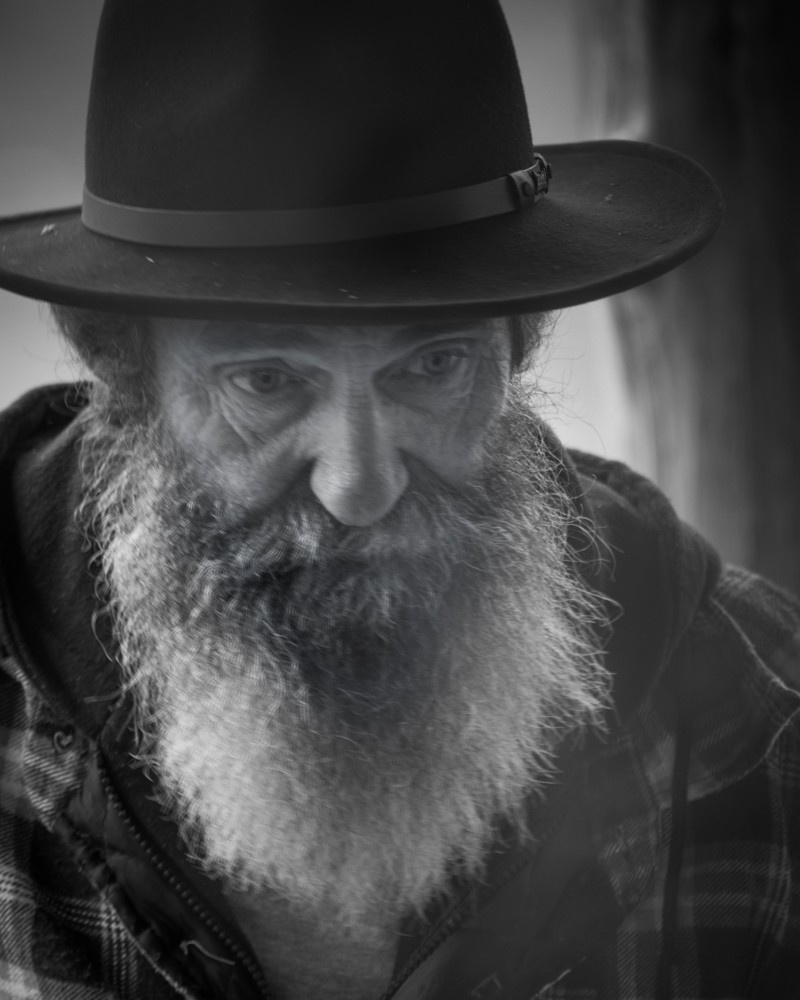The making of molasses is an Appalachian tradition that actually goes back to India and nearly 500 BC. Our mountain folk just perfected the process of making it a social event. Sometimes there is conversation and sometimes not. It is slow, relaxing hard work.
We were visiting friends in Union County for their annual molasses making and this gentleman was there to help. The unknown story of his life is hidden in the lines of his face. I remember thinking at the time that this man must have a gentle soul as his eyes and smile were very calming.
For this image the smoke obscures the background to let the viewer focus on his face. This is one of my favorite-ever portraits. I was glad to be there to observe and take a few images.
Molasses making is a time-consuming process that cannot be hurried. The cane leaves are stripped from the stalk then it is hauled to the cooking site. The stalks are run through a cane mill which squeezes out the juice. The juice is strained through clean cloths and then wrung-out before going into the boiler pan. Each pan is several feet long and wide and 12 inches deep and holds 90 to 100 gallons of cane juice.
A fire is built beneath the pan, the liquid is brought to a low boil and maintained for six to seven hours. Once the juice begins to boil, it is constantly skimmed to remove the residue rising to the top while the juice evaporates and condenses. When ready the molasses is a tasty substitute for sugar in many recipes and sauces.
Photographer Chris and painter Robin Rohwer each week share a painting or photograph that captured their interest. They have a small studio and gallery in the Emporium Center in downtown Knoxville where you can stop and see their work. All works are copyright protected.

